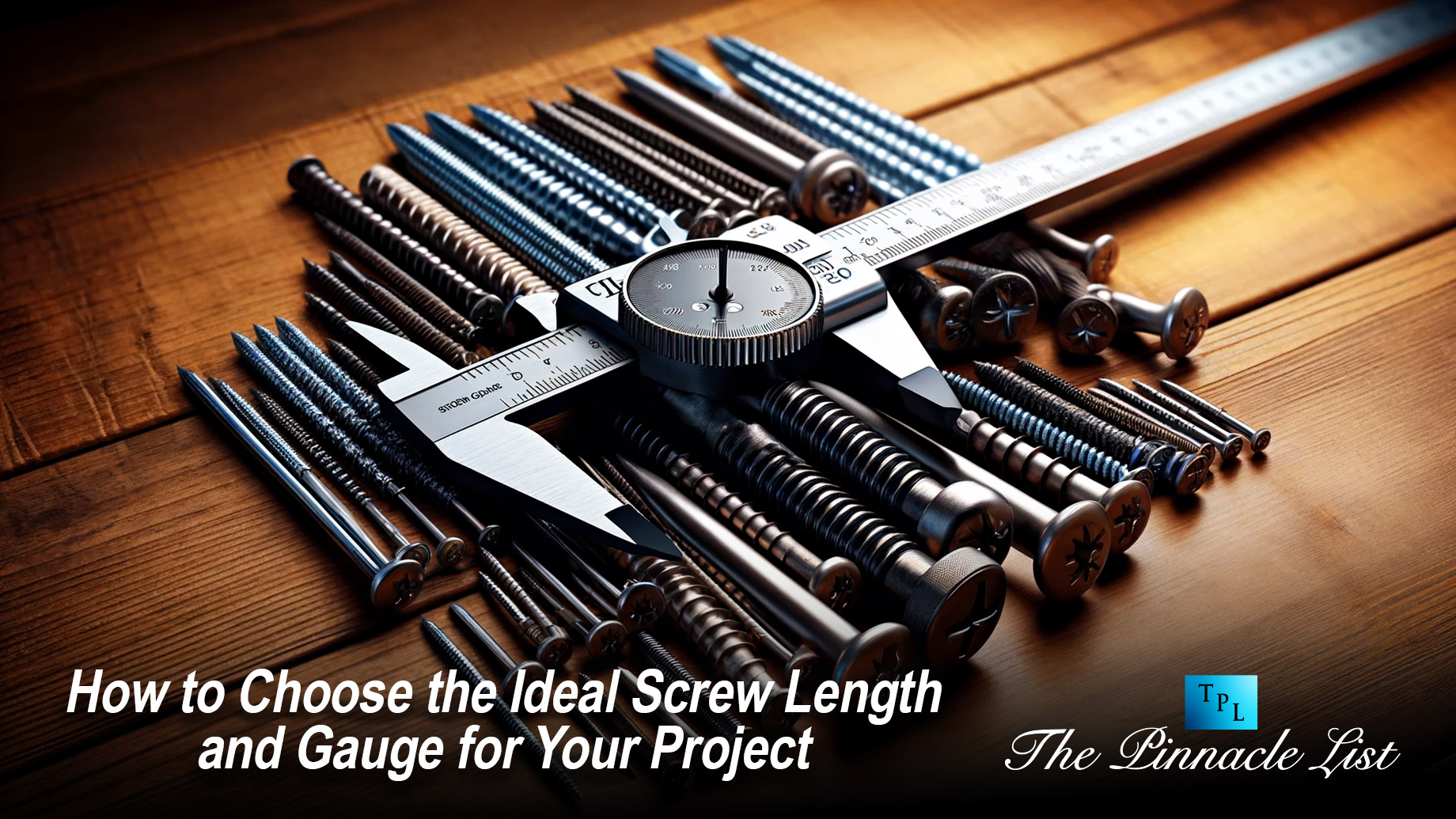
When it comes to DIY projects or professional tasks, using the right screws is essential for ensuring strength, stability, and longevity. However, determining the correct screw length and gauge can be a challenge for many. In this guest post, we will provide you with valuable tips and guidelines so that you never have to worry about using the wrong screws again.
1. Understanding Screw Length
Determining the appropriate screw length is crucial for achieving optimal results in your project. Using screws that are too long or too short can compromise both appearance and functionality. Here are some key considerations to keep in mind when determining screw length:
Identify Material Thickness
The first step is to assess the thickness of the material you are working with. Measure its thickest point accurately using calipers or a tape measure.
Account for Embedment Depth
Once you have identified material thickness, consider how deep you want the screw to penetrate into your material. A rule of thumb is that screws should penetrate at least one-third of their length into the receiving material for maximum strength.
Add Clearance Length if Needed
In certain cases, such as attaching brackets or plates, it’s wise to add clearance length to your calculation. This ensures that there is enough space between the object being attached and the receiving material.
2. Choosing Appropriate Screw Gauge
Screw gauge refers to its thickness or diameter. The right gauge ensures proper holding power and prevents stripped holes or lack of holding strength due to an under-sized screw. Here’s how you can select the ideal screw gauge for your task:
Consider Material Type and Density
Different materials require different screw gauges for optimal performance. For softwoods like pine or cedar, opt for finer gauges such as #7 or #8, while hardwoods may require larger gauges like #10 or #12. Alternatively, refer to manufacturer recommendations for specific materials where applicable.
Anticipate Load and Stress
The intended load and stress on the joint or connection should also influence your choice of screw gauge. Higher loads require thicker gauges to withstand the pressure exerted.
Account for Screw Penetration
If you’re working with a receiving material that necessitates deep screw penetration, select a wider screw gauge than what would typically be recommended for the given material. This helps maintain its holding power even after increased discharge.
3. Additional Considerations
Selecting Screws for Outdoor Projects
When choosing screws for outdoor tasks, it’s essential to use those made from high-quality materials such as stainless steel, galvanized steel, or coated screws. This prevents rusting and corrosion caused by exposure to natural elements like moisture or extreme temperatures.
Supported Weight and Load Bearing Capacity
For projects involving weight-bearing applications such as furniture assembling or cabinetry construction, ensure you select appropriate screws designed to hold hefty loads. Look for load ratings provided by manufacturers as guidance when selecting suitable screws.
Seek Professional Advice if Necessary
If you are uncertain about which screw length or gauge is best suited for your project, don’t hesitate to consult a hardware expert. They can help guide you based on their knowledge and experience.
4. Tips for Ensuring Secure Screw Installation
Pre-drill Pilot Holes
Before driving screws into any material, it is recommended to pre-drill pilot holes to prevent splitting and ensure accurate screw placement. The diameter of the pilot hole should match the inner core of the screw, excluding its threads.
Counter-sink or Counter-bore Screws (If Needed)
In some cases, it may be necessary to hide the heads of screws for aesthetic reasons. Using a countersink bit or counterbore bit will allow you to create a recessed hole that accommodates the screw head, keeping it flush with or below the surface level.
Conclusion
By understanding the importance of appropriate screw length and gauge selection, you can confidently tackle any DIY project with precision and efficiency. Remember the key factors mentioned above, such as material thickness, embedment depth, gauge selection considerations, and additional factors like outdoor usage or load-bearing requirements. By keeping these guidelines in mind, you can ensure that your projects not only look fantastic but also stand the test of time with optimal strength and stability.